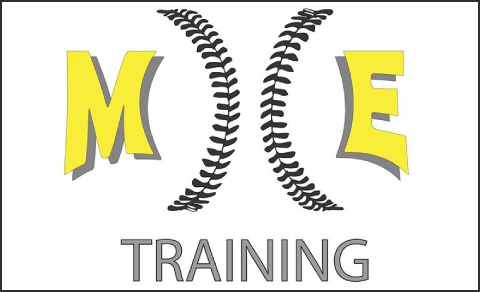https://www.youtube.com/watch?v=4QsJBSSreM4
Jarad Vollkommer, Bs(c), CSCS
ON-DECK ROUTINES: HAVING A PLAN OF ATTACK
Having a plan before you step in the batters box is crucial. Whether it be mental or physical preparation, we must always get ready when were in-the-hole or on-deck.
If you watch any Major-League baseball game, or even a competing travel baseball league game, you will see a lot of different warm ups.

Most on-deck routines may look something like this:
- Putting a donut on the bat and producing crappy swings
- Putting a donut on the bat and producing 3 or 4 swings, taking the donut off and swinging a few more times
- Taking 3 or 4 swings with a normal game bat
- No swinging at all
- Using loading patterns to time up the pitcher
If I were to ask you, why do you perform _____ as your on-deck routine? I hope you can give me a solid answer. If you dont take any swings because you want to be fresh for the at bat, then great! You should always have a why to your routine (like I stated in one of my previous articles here).
Lately, there has been a lot of attention devoted to weighted implement training to enhance bat velocity, as well as using these same devices for a pre-at bat routine. Lets highlight and explain the merit of some of these devices.
The Donut
You see many big leaguers throwing a donut on their bat for several reasons: to loosen up their body, to practice whipping their arms through the zone, to take violent swings, or just to look really strong. But, whats the science behind it?

To become a Black Diamond call 631-942-2542
Some research [1] has looked at using the donut and its effectiveness of bat path and bat velocity. What did these studies show?
Well, by putting the weighted donut towards the barrel of the bat, not only are you adding weight, but the added weight is further away from the knob of the bat where the force is being generated from.
This added weight increases the moment of inertia (tendency to resist angular acceleration) in the swing.
Swinging the weighted donut seems to decrease bat velocity in most cases, and may also alter bat path efficiency [1].

Underload/Overload Bats

Some players like to use bats that are much lighter than their normal game bat. Why? I think many players believe that if they swing this bat with a ton of force, then their hand speed will be increased

The godfather of weighted implement training, Dr. Coop DeRenne, has done a ton of research on the effectiveness of underload and overloaded bat training on swing velocity.
To sum up years of his research, bats that are +/- 10% of your actual game bat can be used to improve swing velocity while maintaining bat path efficiency [1,2].
Staying within this range allows for high-threshold motor units within the muscle to be activated at peak contraction [1, 2]. Anywhere outside of this range will lead to fatigue.
Isometric Contractions

Register for the August 6 Showcase at Stony Brook University!
Isometric contractions? What the heck are those?
An isometric contraction is like squeezing your bicep as hard as you can in one position. Imagine trying to curl a 100-pound dumbbell. Chances are, no matter how hard you contract, you will just not get the weight up.
But, how does this even relate to baseball?
Well, there is some interesting research from Japan by Takatoshi Higuchi [3].
What Higuchi and others (2013) found was that holding a maximal contraction against an external load at the contact point during the swing INCREASED bat velocity when performed before a normal game-speed swing.

Being able to increase force production at a specific time point in the swing may be critical for an acute enhancement in performance.
The theory is that these maximal contractions will induce a phenomenon known as postactivation potentiation: an acute enhancement in force production [3].
However, the only limitation to this research is that there is a general rest time needed to see peak performance (around 3 minutes). Obviously, this certainly wont help if youre in the on-deck circle for 30 seconds.
Key Takeaways
Players use weighted implements to prime the nervous system, hoping that when they swing their normal game bat, bat velocity slightly increases.

If you could slightly increase your bat velocity in the acute time, this is an advantage for one big reason: TIMING! If youre able to increase the amount of time you have to swing, then you should certainly take that advantage.
However, most players are using these modalities for the wrong reasons!
Since swinging a baseball bat is highly skilled in nature, the more you fatigue the nervous system, the greater the chance you will create adverse effects on your swing.

A highly skilled movement requires VERY specific motor unit firing patterns within the muscles. If this pattern is disrupted, mechanics are compromised.
Based on the science, using a weighted bat that is within the 10% range will not alter swing mechanics and can slightly increase swing velocity. If you plan on using isometric contractions, I wouldnt pair it with high-intensity swings right after. We also need more research Ill get back to you on that one.




